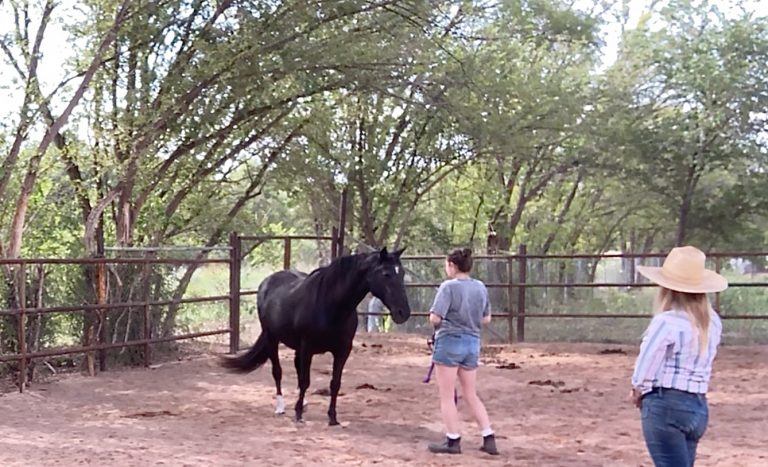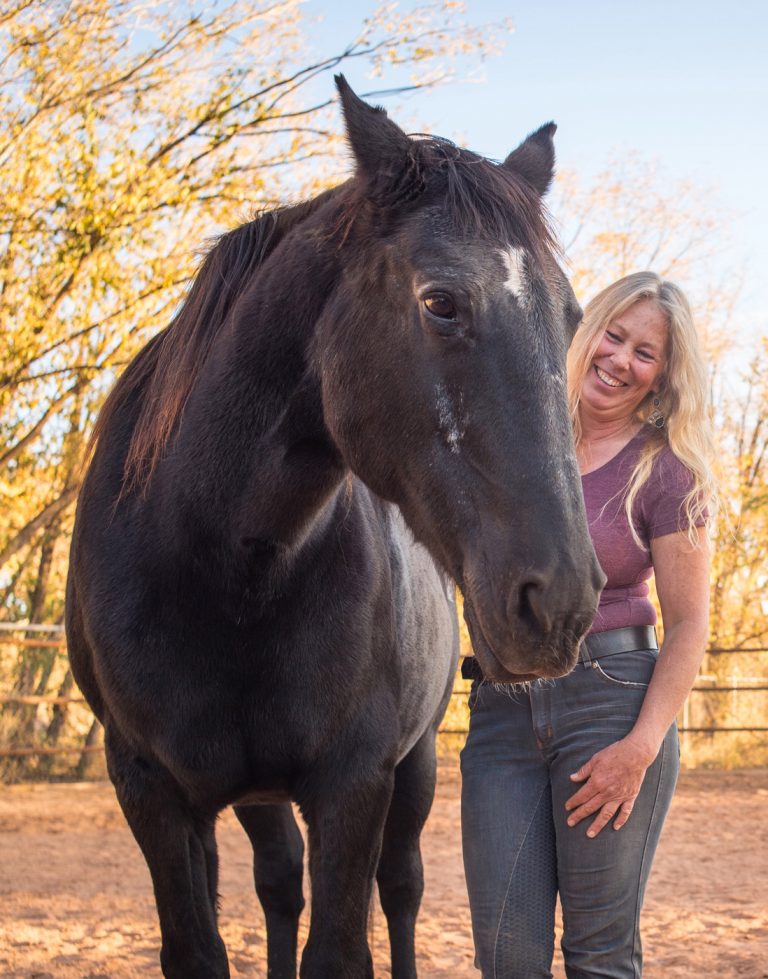I love “problems” and “problem horses,” and I love giving people the tools to change tense situations into harmonious moments. Below is a list of some of the areas I focus on. I also help people with saddling/bridling problems, biting, not wanting to go, etc.
Trailer Loading with Confidence
You’ll learn how to get your horse confident and willing to go into the trailer by building your leadership and communication skills.
With practice, your horse will learn to hop happily into the trailer to go trail riding, to a show, or to the vet. The key to successful trailer loading is developing ways to play with your horse using different obstacles and situations; the trailer is just another obstacle! This method builds a foundation for long term cooperation and safety that goes way beyond trailer loading.
We’ll focus on:
Reading your horse’s body language
Recognizing thresholds so you know when your horse is becoming unconfident or uncomfortable
Learning when to ask for more, and when to offer rest and reward
Building your repertoire of language and games so your horse responds with confidence and willingness
How to position yourself to stay safe
We’ll get creative about building your skills. You’ll learn how to assess problems, read horse behavior, and find solutions. There will be exercises to practice with your horse in between our sessions.
Helping Horses Recover from Trauma
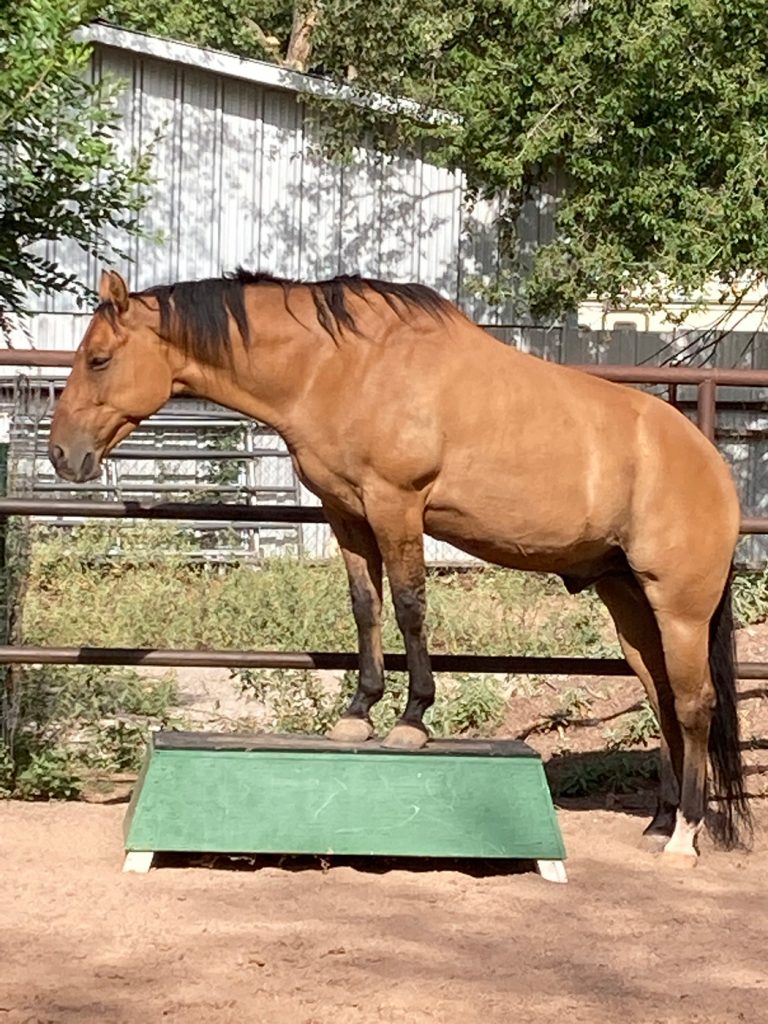
You’ll learn concrete techniques to facilitate your horse’s recovery, and you’ll receive support to sustain and inspire you on your journey with your horse.
I’ve researched trauma treatment to find techniques and approaches that are applicable to horses. I’ve tested them on my own and my clients’ horses, so I know they work. Recovering from trauma takes time, but there are lots of things we can do to set up a safe environment where a horse can heal and grow.
You’ll learn about:
Trauma treatment theory and how it applies to horses
How a horse’s brain and nervous system handle trauma
Fine-tuning your ability to read your horse’s body language so you can see things coming before they happen
How to hone your timing so you guide your horse without overwhelming them
Co-regulation through breathing, movement, and play
Titration – using approach and retreat to build comfort and confidence in challenging situations
Mindfulness techniques to to create a safe environment and make you more effective
How to help your horse when they “zone out” or “freak out”
Putting triggers into context: time of day, time of year, day of the week, alignment with cardinal directions. When you pay attention to these details, you leverage your power to help your horse change.
Practical Self-Compassion
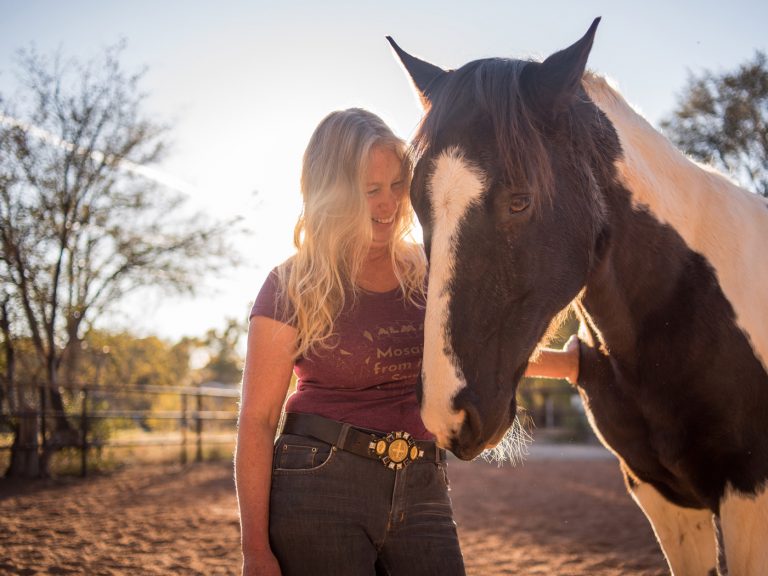
Photo Credit: keithscottart.com
(Non-horsepeople are welcome too!)
You will learn concrete skills you can use to become more patient, loving, and gentle with yourself. I believe that self-compassion is the key to happiness! This concept is missing from so many approaches to personal growth. Self-compassion is a “muscle” that we can learn how to build to promote happiness and well-being for the rest of our lives.
The foundational concept about self-compassion is that you can develop an ACTIVE relationship with yourself in which you treat yourself lovingly. Mindfulness practices anchor this learning.
You’ll build a tender, positive relationship with yourself through:
Learning a variety of methods for compassionate mindfulness
Creating space in your life to invest in your self-compassion
Becoming aware of patterns of self-judgement
Developing a compassionate voice
Creating mantras that will guide you step by step through difficult moments
Using multiple modalities for self-compassion mindfulness practices
Getting creative about all the different ways you can harness your loving voice
Developing strategies for long-term use of the tools you’ve learned
Integrating self-compassion into all areas of your life
Staying Happy and Safe on the Trail
New Mexico has some of the most beautiful trails in the world. Learn how to have more fun exploring with your horse!
Trail riding can be so delightful…a beautiful location, a happy horse, and the peace we feel when we’re at one with nature and our horse. Trail riding can also be frustrating or terrifying if our horse is unconfident, spooky, or trying to run home. You’ll learn steps you can take to help your horse stay in a partnership frame of mind so you can have amazing adventures together.
You’ll learn how to:
Prepare your horse ahead of time
Read your horse’s behavior so you recognize when you need to help them regain confidence
Build your leadership so your horse always knows they’re safe with you
Intervene when necessary and do what your horse needs so you both stay safe and confident
Develop partnership and confidence long term
The Lotus Horsemanship barn is located in the South Valley, next to beautiful trails by the acequias and the river. We can ride in my arena and on the trails, or we can meet at your place.
Fun with “Problems”
Fun with “Problems”
You love your horse, and you’re proud of your partnership…but there are places where you have trouble. We’ll turn difficulties into doorways to learning so you get the support and transformation you need with your horse.
In a fun and nonjudgmental environment, we’ll tackle issues such as:
Spooking
Difficulty mounting
Saddling and bridling problems
Horses that don’t want to go, or that go too fast
Anything that’s bothering you or preventing you from doing the things you want to do!
You’ll solve problems by learning strategies for:
Breaking your training process down into steps that you and your horse can master
Developing clearer communication
Building your confidence and leadership
Building your relationship with your horse
You’ll learn ways to work and play with your horse that will allow you to solve the “problem” you’re currently having and then keep progressing. I’ll provide support, humor, and inspiration every step of the way. We’ll attend to the inner work we sometimes need to do on ourselves as we advance our horsemanship, as well as the development of our horses.
Deep Seat Derby - Fun Games for Developing Your Independent Seat and Hands
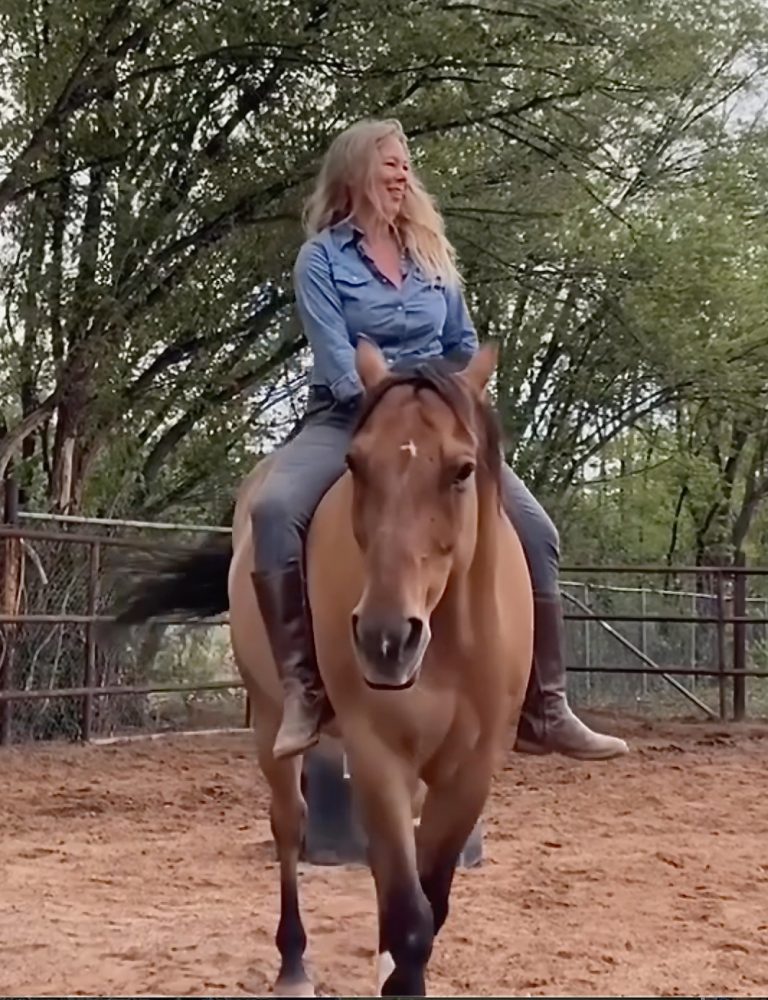
This silly yet serious workshop is based on gymkhana games to help riders improve their balance in a supportive, fun, non-judgmental atmosphere. By playing games on horseback, you’ll learn 10 techniques to develop a deeper seat and gentler, more responsive hands.
You’ll learn to ride more gracefully, so you’ll feel better about how you look on a horse. You’ll become more stable in the saddle. As you develop stronger balance in your own body, you allow your horse to move more freely and fluidly…and you’ll stay safer in unpredictable situations. Prepare to get goofy and laugh a lot as you improve your riding skills.
We will play with:
Exercises and simulations to help you find your balance point
Unmounted games where you will learn to feel what the horse feels
Mounted games
Exercises that give you support from the ground when necessary using a lead line or lunge line so you can concentrate on learning without having to guide your horse
Your horse should be able to walk and trot calmly and be able to stay confident with your weight shifting around while you’re riding. If your horse tends to be spooky, aggressive, or out of control when you’re riding, I recommend that we work on this behavior first so you can get the most out of this class.
The Catching Game: Doorway to Liberty
It’s stressful to go out to the corral knowing it will take forever just to get the halter on. Playing the Catching Game will teach your horse to approach you instead.
You’ll build trust and respect to the point where your horse will follow YOU around. After solving catching problems, we’ll begin exploring other things you can do with your horse with no leadline or halter needed!
You’ll explore a variety of techniques that will bring your horse to you including:
When to apply pressure, and when to release pressure
Drawing your horse to you and driving your horse to you
Using hindquarter yields to increase draw
Replicating mother/foal synchronization so your horse stays with you
Refining your feel and timing to help your horse feel confident being close to you
Building trust and responsiveness
Beyond catching your horse, the Catching Game opens up a myriad of possibilities for your partnership. It builds a level of bonding and leadership that will ripple into other things you do together. You will love learning how to keep your horse attached to you in different situations.
Training at Liberty for Deeper Communication
Training your horse without a halter, rope, saddle, or bridle can be very powerful for your partnership and skill-building. Liberty play helps take your groundwork and mounted work to the next level!
Liberty allows the horse a greater range of ways to express him/herself, so you can gauge a horse’s thoughts and reactions in more detail. For horses who’ve been through trauma, it offers a wonderful way to provide choice, freedom, and emotional safety so they can grow and recover while learning with you. Everything I teach at liberty builds skills for when we’re in the saddle, so it’s a complementary form of training. Liberty training can catapult us into that place of wonder where we can do things with our horse that seem like magic…and are endlessly fun and challenging.
We will cover:
Prerequisites for liberty: connection, good boundaries, and good draw
What to do if your horse “leaves”
Saddling and mounting at liberty
For More Information on Lessons
I use a collaborative approach to teaching that’s centered on finding the best in you and helping you grow it. I’ll challenge you, while remaining sensitive to your needs. Feel free to get in touch for more information!
“Cassandra has taught me how much more you can understand about horses just by being patient and observant of their behaviors, especially the finer movements I never would have known to look for in the past. I feel more confident in my horsemanship and myself thanks to her.”
—Simone G.
